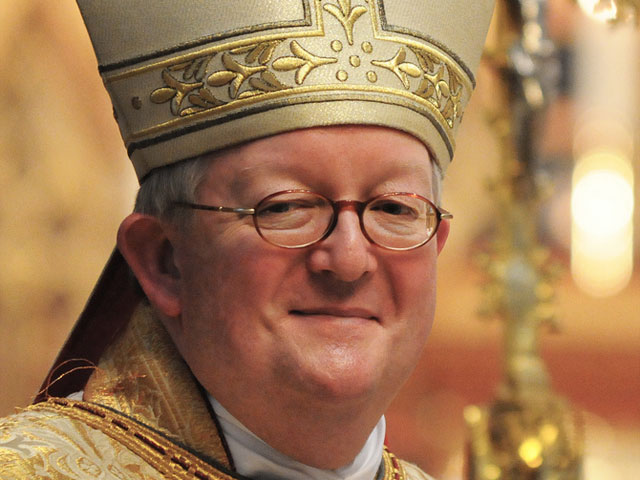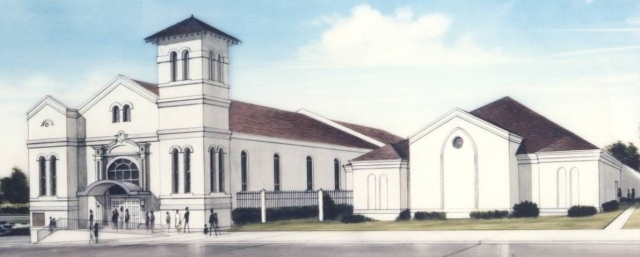It’s been about five years since I was last in Zanzibar. I was part of the press gaggle accompanying the archbishops of the Anglican Communion on a day trip from the mainland to Christ Church Cathedral in Stone Town — the island’s principal town. Built over 125 years ago on the site of the old slave market (the altar was built atop the sight of the market’s whipping post) the picturesque coral stone cathedral is a monument to the British suppression of the slave trade. Zanzibar had been the entrepôt for slaves captured on the mainland before they were shipped north to the Arab world.
Zanzibar was a welcome diversion from the rather limited delights of Dar es Salaam, and I have followed and reported on the news from the island — part of the Republic of Tanzania — ever since. My knowledge of the island and its history has grown from a vague idea it was connected with Freddie Mercury and a Bob Hope movie. I have also come to know the Anglican bishop of the island and am a “Facebook friend” with one of his clergy.
Hence this story from Reuters caught my eye. Through Facebook posts I was aware of the situation on the island and was waiting to see what would come across the wires.
The 18 Oct 2012 story begins:
STONE TOWN, Zanzibar (Reuters) – Supporters of a separatist Islamist group in Zanzibar looted shops and fought with police on Thursday after their leader disappeared, witnesses said, the third outbreak of violence this year on the Indian Ocean archipelago.
Supporters of Sheikh Farid Hadi, a leader of the Islamic Uamsho (Awakening) movement who has not been seen since Tuesday, threw stones at police, blocked roads with cut-down trees and burned tyres in the island’s main town. “Police are everywhere and firing teargas. There is nobody around town and the shops are closed. It’s a terrible situation,” Said Salleh, 40, a businessman from Zanzibar, told Reuters by phone.
Witnesses said protesters looted shops and video footage showed a number of rioters holding machetes and hiding their faces with balaclavas. Heavily armed police stepped up patrols late on Thursday and continued to engage in sporadic battles with rioters in Zanzibar’s historic Stone Town. “The streets are deserted … Only heavily armed policemen are now patrolling the town. We are afraid to go out, we can still hear the sound of gunfire,” Rukiya Khalifa, a resident of the historic Stone Town area, told Reuters.
The latest violence raised concerns of an escalation in religious tension in the predominantly Muslim island which is part of Tanzania but ruled by a semi-autonomous secular government.
The article continues with background information on the political roots of the discontent, statements from police and government leaders, and closes with this sentence:
In May Uamsho supporters set fire to two churches and clashed with police over the arrest of senior members of the movement.
What struck my eye as I read this story was a suspicion that the dateline for this story was incorrect. At the foot of the story a note states the reporting took place from Dar es Salaam, with additional reporting taking place at other locations. The language of the story, “told Reuters by phone” and “video footage showed” strongly suggests this report was not written from Stone Tone in Zanzibar as the dateline states, but elsewhere.
Reporters cannot be everywhere and there is nothing wrong with basing stories upon telephone interviews, government press statements, and video footage. But I question the wisdom of leading with the Stone Town claim, for if the reporter were writing from the island, I wonder why he would have omitted the news that Christ Church Cathedral was attacked by Uamsho militants, some Christians have gone into hiding for fear of their lives, and the Bishop of Zanzibar and some of his clergy were evacuated by plane from the island.
I am not in Stone Town and my knowledge of the above comes from telephone and Facebook communications from those who witnessed the riots and have fled the island — one fellow saying he and his family left house and car, dog and cat behind and wondering what he will find when he is permitted to return. Nor do I know the fate of the Roman Catholic bishop of Zanzibar or if militants attacked St Joseph’s Cathedral.
While the Reuters piece closes with a mention of the past church burnings, there is no sense in this story that the militant outrage over the arrest of their leader by police is expressed in attacks on a small and vulnerable Christian minority. Is it that after reports of pogroms and persecution of Christians in Egypt, Iraq, Syria, Pakistan, Somalia the Sudan, Nigeria, and Kenya in recent weeks, another church burning does not warrant more than a brief mention? I am also uneasy about the lack of context for this story. I will concede that context is a rare thing in a wire service story where a reporter must squeeze as much as he can into 400 words or less. But omitting the over arching place of radical Islam in the story does leave the piece unfinished.
At the same time, I am writing from the safety of the U.S. and am not of interest to the East German-trained security services of Zanzibar nor subject to the country’s press laws. There is no danger of my prattling on about persecution as I am safe from it. Tell me GetReligion readers, where does the balance lie? How much can be told? How much should be told? Can a story be shaded to claim it was written on sight, but remove the clues that would give a malevolent eye a hint as to who was talking? What say you?











